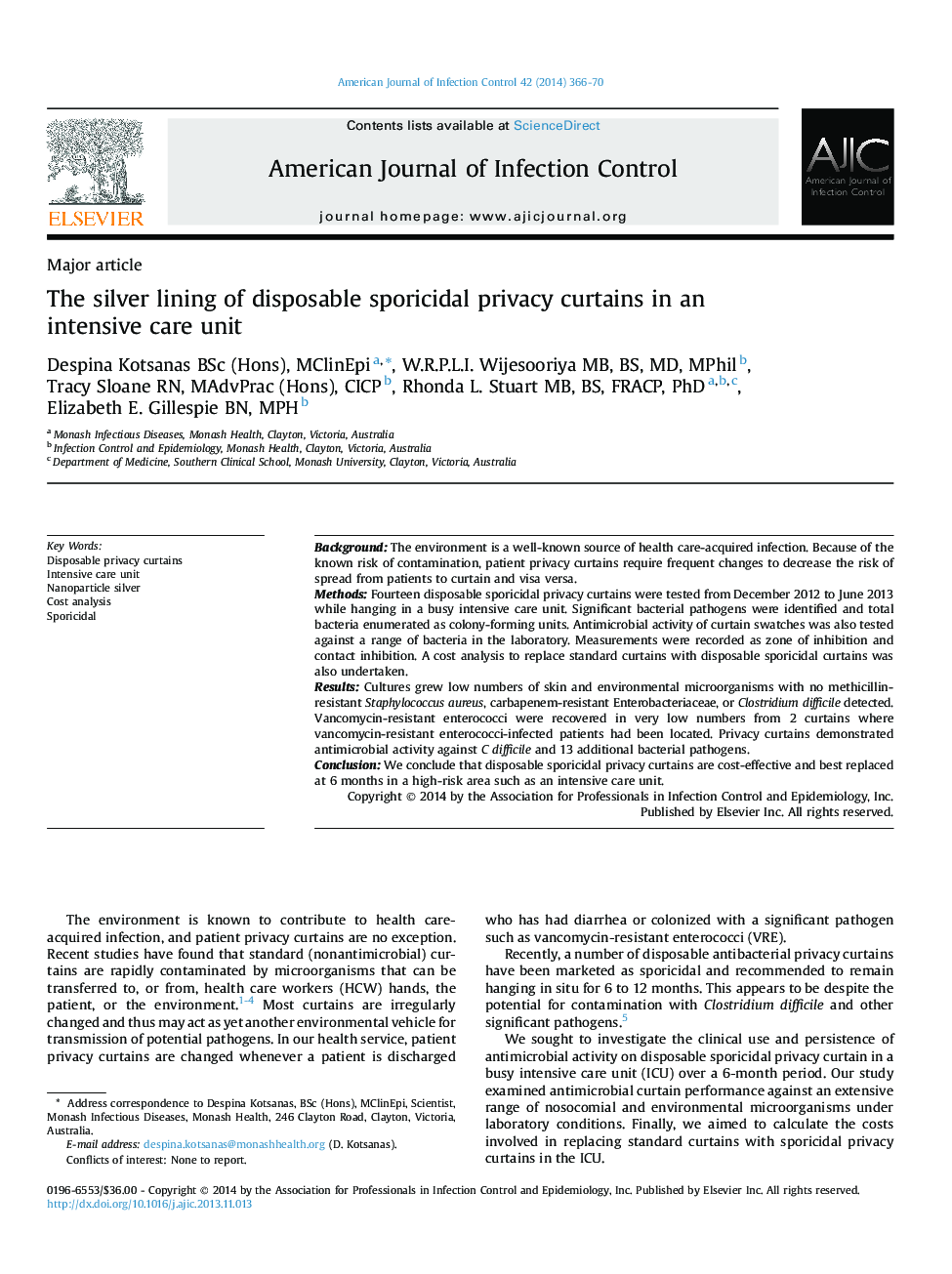| Article ID | Journal | Published Year | Pages | File Type |
|---|---|---|---|---|
| 2639303 | American Journal of Infection Control | 2014 | 5 Pages |
BackgroundThe environment is a well-known source of health care-acquired infection. Because of the known risk of contamination, patient privacy curtains require frequent changes to decrease the risk of spread from patients to curtain and visa versa.MethodsFourteen disposable sporicidal privacy curtains were tested from December 2012 to June 2013 while hanging in a busy intensive care unit. Significant bacterial pathogens were identified and total bacteria enumerated as colony-forming units. Antimicrobial activity of curtain swatches was also tested against a range of bacteria in the laboratory. Measurements were recorded as zone of inhibition and contact inhibition. A cost analysis to replace standard curtains with disposable sporicidal curtains was also undertaken.ResultsCultures grew low numbers of skin and environmental microorganisms with no methicillin-resistant Staphylococcus aureus, carbapenem-resistant Enterobacteriaceae, or Clostridium difficile detected. Vancomycin-resistant enterococci were recovered in very low numbers from 2 curtains where vancomycin-resistant enterococci-infected patients had been located. Privacy curtains demonstrated antimicrobial activity against C difficile and 13 additional bacterial pathogens.ConclusionWe conclude that disposable sporicidal privacy curtains are cost-effective and best replaced at 6 months in a high-risk area such as an intensive care unit.
